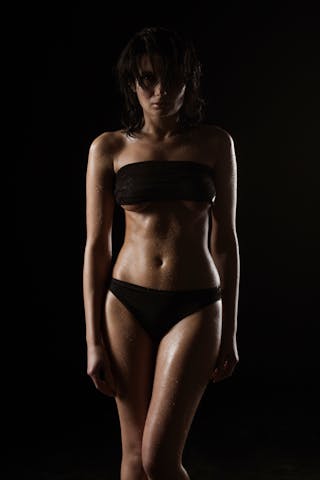Creating An Asexual Character For TV Showed Me We Have A Way To Go
Have you ever noticed the lack of diverse representation on TV? It's like we're stuck in a loop of the same old storylines and characters. But fear not, change is on the horizon! There's a long road ahead, but we're making strides towards a more inclusive and representative media landscape. It's time for everyone to see themselves reflected on the screen. So let's keep pushing for more diverse stories and characters, because everyone deserves to feel seen and heard. And if you're looking for some love and fun in the meantime, check out MyDirtyHobby - the ultimate dating app here!
When it comes to representation in media, the asexual community has often been overlooked. As a writer for a popular dating blog, I recently had the opportunity to create an asexual character for a TV show, and it opened my eyes to the lack of diversity and understanding when it comes to asexuality in mainstream media.
Check out the top dating sites for local singles in Austin and discover love in the city!
A Lack of Representation
Check out this review of Roc and Shay on Dating Help US and see why you should give it a try.
For far too long, the asexual community has been left out of the conversation when it comes to representation in media. Asexuality is a sexual orientation characterized by a lack of sexual attraction or desire, yet it is often misunderstood or completely ignored in popular culture. This lack of representation can lead to feelings of isolation and invisibility for asexual individuals, making it difficult for them to see themselves reflected in the world around them.
Explore the best interracial porn site deals for a diverse and inclusive adult entertainment experience.
Creating an Asexual Character
When I was approached to write for a TV show, I saw it as an opportunity to bring visibility to the asexual community. I wanted to create a character that was authentic and relatable, someone who could help shed light on what it means to be asexual. As I delved into the research and writing process, I realized just how little mainstream media has addressed asexuality, and how much work there is still to be done.
Challenges and Misconceptions
As I developed the character, I encountered numerous challenges and misconceptions surrounding asexuality. Many people simply don't understand what it means to be asexual, and there is a prevailing belief that asexuality is simply a lack of sexual experience or desire, rather than a valid sexual orientation. I found myself constantly having to educate others about asexuality and dispel harmful myths and stereotypes.
The Importance of Authenticity
It became clear to me that in order to authentically represent the asexual community, I needed to ensure that the character's experiences and struggles were rooted in reality. I spoke to asexual individuals, read personal accounts, and sought out resources to gain a deeper understanding of what it means to be asexual. It was important to me that the character's story was nuanced and respectful, and that it accurately portrayed the challenges and joys of navigating a world that often fails to acknowledge asexuality.
The Impact of Representation
As I continued to develop the character, I couldn't help but think about the impact of representation on the asexual community. Seeing themselves reflected in media can be incredibly validating for asexual individuals, helping them feel seen and understood. It can also serve as a tool for education, helping to raise awareness and combat the misconceptions that surround asexuality. By creating an asexual character, I hoped to contribute to a larger conversation about the importance of inclusive representation in media.
The Work Ahead
While creating an asexual character was a step in the right direction, it also highlighted just how far we have to go in terms of representation. Asexuality is still largely absent from mainstream media, and there is a pressing need for more diverse and authentic portrayals of asexual individuals. It is my hope that by bringing attention to this issue, we can start to chip away at the stigma and misunderstandings that surround asexuality.
In Conclusion
Creating an asexual character for a TV show was a powerful reminder of the work that still needs to be done to achieve true representation in media. It is crucial that we continue to push for diverse and authentic portrayals of asexual individuals, and that we work to educate others about what it means to be asexual. By doing so, we can help create a world where everyone feels seen, understood, and valued, regardless of their sexual orientation.
- https://matchmaker-website.themountaintopplay.com/posts/the-best-day-to-get-back-on-your-dating-apps-in-2020/
- https://dating-website.getweps.com/posts/zachary-zanes-boyslut-a-memoir-and-manifesto-explores-fraysexuality-an-excerpt/
- https://singles.campsupernow.com/posts/30-day-sex-challenge-i-attempted-the-reddit-sex-challenge-and-it-was-hard/
- https://chat.timebombrecordings.com/posts/black-women-sex-stereotypes-sex-educator-rukiat-interview/
- https://matchmaker-website.timebombrecordings.com/posts/5-positions-that-prove-clothes-make-sex-hotter/
- https://location-dating.getweps.com/posts/sex-with-bisexual-men-is-better/
- https://dating-guide.campsupernow.com/posts/intimacy-what-is-sexual-intimacy/
- https://dating.timebombrecordings.com/posts/cosmopolitan-podcast-all-the-way-with-sex-relationship-podcast/
- https://online-hookup.ua-sex.com/posts/anal-sex-myths-misconceptions-about-anal-sex/
- https://dating-guide.thehottieandthenottie.com/posts/its-unicorn-season-heres-how-to-survive-as-a-bisexual-woman/
- https://hookup-website.campsupernow.com/posts/navigating-sex-with-white-people-as-a-woman-of-colour/
- https://singles.themountaintopplay.com/posts/my-best-sex-ever-was-my-first-time-with-a-woman/
- https://sex-app.campsupernow.com/posts/fetishisation-fetishisation-meaning-in-dating/
- https://dating-website.themountaintopplay.com/posts/my-best-sex-ever-was-mutual-masturbation-in-public/
